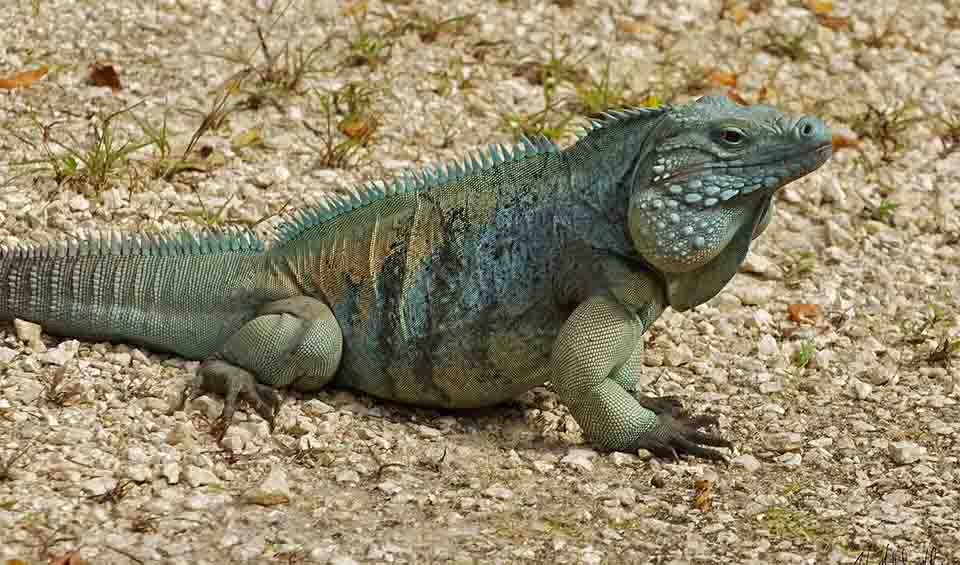A strikingly beautiful and critically endangered species native exclusively to the Grand Cayman island. These lizards are remarkable not only for their vivid blue coloration, which is most intense in males and during the breeding season but also for their large size. They are among the heaviest and longest-living lizards, often reaching lengths of up to 1.5 meters (5 feet) and weighing as much as 14 kilograms (30 pounds).
Blue iguanas are predominantly herbivorous, and their diet mainly consists of various vegetation in their natural habitat. They consume leaves, stems, fruits, and flowers, which provide the nutrients and water they need to survive. Their feeding habits play a significant role in seed dispersal and maintaining the health of their native xerophytic shrubland ecosystems. Occasionally, they may also ingest small amounts of non-plant materials such as earth, insects, feces, and fungi, which can provide essential minerals or help with digestion.
Blue iguanas thrive in the arid environments of the Grand Cayman island, where they can often be found basking in the sun. Sunlight is vital for these cold-blooded creatures as it helps regulate their body temperature and is necessary for synthesizing vitamin D, which is crucial for calcium absorption and overall health.
Despite their adaptability and resilience, blue iguanas face a dire threat to their survival. With a population that once dwindled to as few as 10-25 individuals in the wild, they have been classified as Endangered on the IUCN Red List. The primary threats to their existence include habitat destruction and fragmentation due to development, road mortality, and predation by dogs and cats. In addition, they are also at risk from invasive species which compete for food and spread diseases.
Distribution
 Cayman Islands
Cayman IslandsDid you know?
- The Blue iguana is one of the longest-living species of lizard.
- Blue iguanas have red eyes adapted to protect pupils from the sun’s glare.
- The Blue iguana’s eggs are among the largest laid by any lizard.
Anything we've missed?
Help us improve this page by suggesting edits. Glory never dies!
Suggest an editGet to know me
Terrestrial / Aquatic
Altricial / Precocial
Polygamous / Monogamous
Dimorphic (size) / Monomorphic
Active: Diurnal / Nocturnal
Social behavior: Solitary / Pack / Herd
Diet: Carnivore / Herbivore / Omnivore / Piscivorous / Insectivore
Migratory: Yes / No
Domesticated: Yes / No
Dangerous: Yes / No





